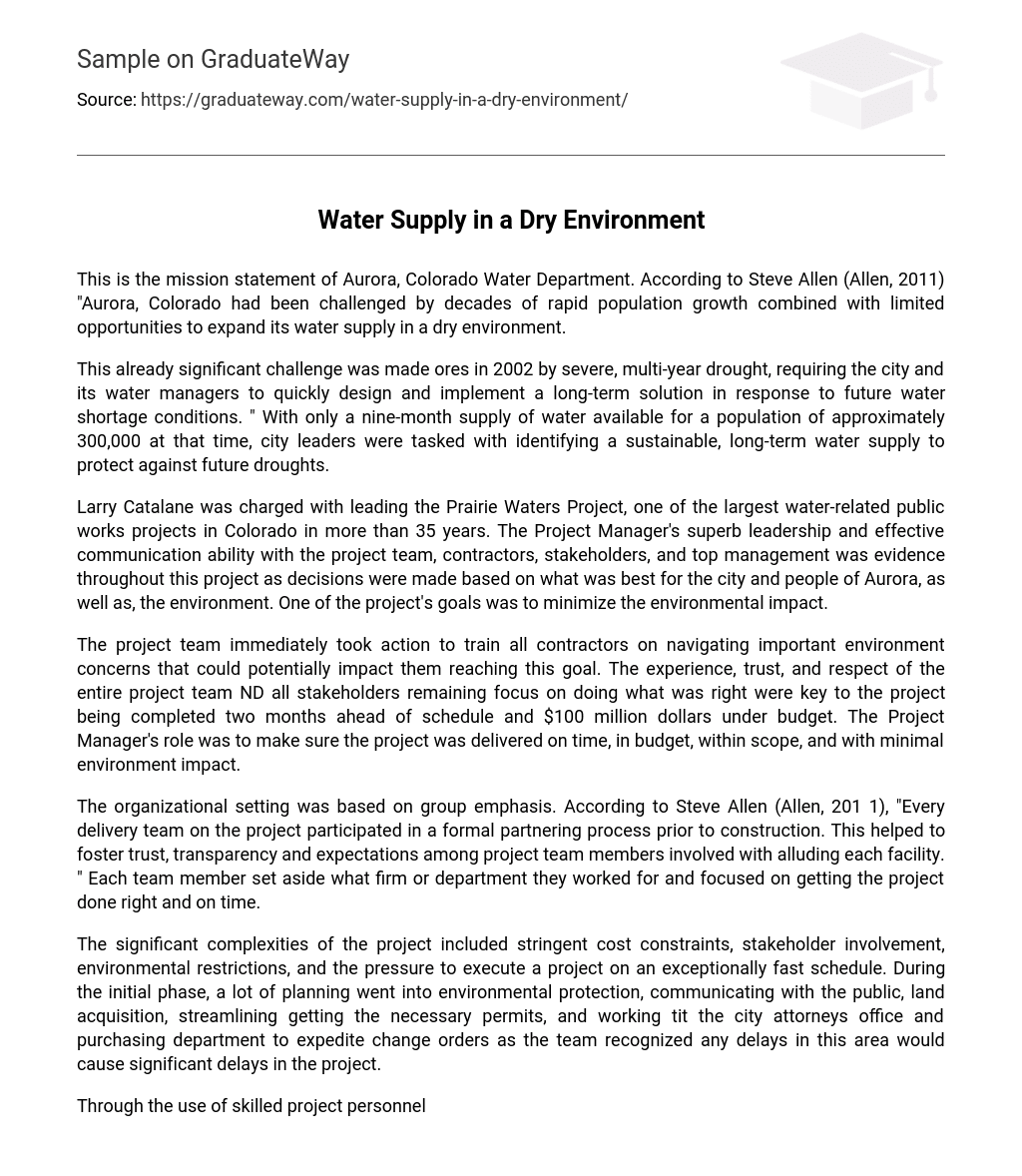This is the mission statement of Aurora, Colorado Water Department. According to Steve Allen (Allen, 2011) “Aurora, Colorado had been challenged by decades of rapid population growth combined with limited opportunities to expand its water supply in a dry environment.
This already significant challenge was made ores in 2002 by severe, multi-year drought, requiring the city and its water managers to quickly design and implement a long-term solution in response to future water shortage conditions. ” With only a nine-month supply of water available for a population of approximately 300,000 at that time, city leaders were tasked with identifying a sustainable, long-term water supply to protect against future droughts.
Larry Catalane was charged with leading the Prairie Waters Project, one of the largest water-related public works projects in Colorado in more than 35 years. The Project Manager’s superb leadership and effective communication ability with the project team, contractors, stakeholders, and top management was evidence throughout this project as decisions were made based on what was best for the city and people of Aurora, as well as, the environment. One of the project’s goals was to minimize the environmental impact.
The project team immediately took action to train all contractors on navigating important environment concerns that could potentially impact them reaching this goal. The experience, trust, and respect of the entire project team ND all stakeholders remaining focus on doing what was right were key to the project being completed two months ahead of schedule and $100 million dollars under budget. The Project Manager’s role was to make sure the project was delivered on time, in budget, within scope, and with minimal environment impact.
The organizational setting was based on group emphasis. According to Steve Allen (Allen, 201 1), “Every delivery team on the project participated in a formal partnering process prior to construction. This helped to foster trust, transparency and expectations among project team members involved with alluding each facility. ” Each team member set aside what firm or department they worked for and focused on getting the project done right and on time.
The significant complexities of the project included stringent cost constraints, stakeholder involvement, environmental restrictions, and the pressure to execute a project on an exceptionally fast schedule. During the initial phase, a lot of planning went into environmental protection, communicating with the public, land acquisition, streamlining getting the necessary permits, and working tit the city attorneys office and purchasing department to expedite change orders as the team recognized any delays in this area would cause significant delays in the project.
Through the use of skilled project personnel, the rigorous application of project management standards, processes, and techniques, the Prairie Water project was able to cut $100 million from the budget in the design phase by decreasing the scope without compromising quality and safety, bringing the construction budget to $754 million. (Reuters, 2013). The planning ND execution of value engineering techniques enabled the team to fast-track the project two months ahead of schedule and trim an additional $100 million dollars off the project cost.
The Project Manager’s execution of an obviously well thought out project management plan coupled with deploying effective communication, controlling project work, and managing changes resulted in a successful project.





